A unique opportunity to start a journey between sea, mountains and archaeology, down from the Tyrrhenian coast to the slopes of Mancuso
by Armando Orlando
The Roman conquest of Calabria began in 282 BC, when the Greek colony of Turi, attacked by the Bruttii, asked Rome for help. The local landowning class and aristocrats welcomed the legions, while the merchants, sailors, craftsmen and common people showed some resistance.
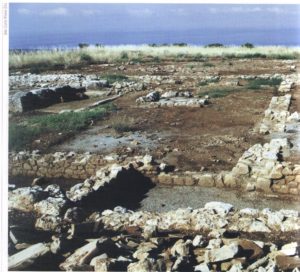
In the space of a few years, all the cities of Calabria were occupied, the Bruzi reduced to obedience, and the Greek colonies began to collaborate with the Romans, contributing, with their experience, to nurturing the seafaring vocation of the city of Rome (the “Urbe”). Half of the Sila was then confiscated and declared “ager publicus” in order to supply the capital with timber.
During the Punic wars, Calabria became a land of battle and clash between opposing armies, the cities depopulated, all agricultural activity ceased and sheep farming and commerce also disappeared. Historians write that the entire Bruttian people was reduced to slavery, deprived of the title of ally, declared incapable of bearing arms, reduced to the conditions of public slave and excluded from any military participation.
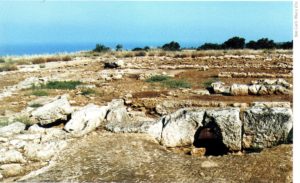
In 203 BC, Hannibal left Calabria because he was recalled to his homeland to counter the assault of Scipio Africanus, the Roman conquest of the region could be considered concluded: the ancient indigenous populations were dispersed and the aristocrats present in the ancient Greek colonies no longer represented a compact ethnic group.
The war veterans then became masters of the territory, and while in Rome the most enlightened exponents of the Republic fought for a more equitable distribution of wealth, while Gracchus’s proposal to extend Roman citizenship led to the tribune’s death, it also spread to Calabria the public agro and the large estate was born.
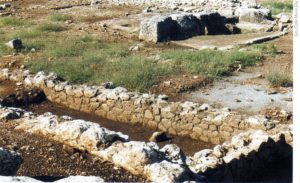
Thus the small farmers disappeared, and the peasants were reduced to the rank of serfs. No agricultural activity prospered, with the exception of the cultivation of vines and olive trees, and only in some large estates did the slaves listlessly cultivate fruit trees, or graze sheep and pigs. For the rest, the lands were left uncultivated and the rivers abandoned to their course: after the rains the waterways overflowed, and then returned leaving ponds in which malaria originated.
The phenomenon of Roman rustic villas fits into this framework, centers of agricultural production that were planted on the territory already in the late Republican age, to then find widespread diffusion in the imperial age. Originally conceived as a simple farm to contain the home of the owner and the workers, more linked – therefore – to the small property, the villa assumed, over time, the characteristics of a real farm, favored by the possibility of exploiting offered by uncultivated land and the introduction of new production techniques.
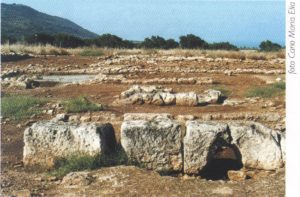
The structure often modeled – this is the case of Falerna – previous settlements of the Hellenistic age, located halfway on the slopes of the hills that descend to the sea, near steep river valleys. In the Hellenistic age these complexes appeared to be very dense, while in the Roman age they thinned out and were arranged in such a way as to exploit large areas of the territory.
In the current province of Catanzaro Roman villas are reported in the plain of S. Eufemia and in Squillace: to these is added the villa of Pian delle Vigne di Falerna.
The villa – wrote Roberto Spadea of the Archaeological Superintendence of Calabria in 1982 – is on the southernmost plateau near Capo Suvero. The archaeological investigations of three years have identified and partially brought to light the “pars rustica” of the complex, with a large quadrangular warehouse and the area of the “torcularia” (three in number) for the processing of wine and oil. The villa is in an extraordinarily panoramic position dominating the southern arc of the Gulf of Lamezia and from here to Capo Vaticano. It finds sure resource in the exploitation of the terrace on which it is located and the crags that surround it. Below, on the coast, the existence of an area dotted with walls of large “pithoi” and other containers has been ascertained in the “Maiolino” district, an evident branch of the main complex and probably in connection with a Tyrrhenian traffic route. The main nucleus, above, is superimposed on a late Hellenistic farm, a phenomenon which will be found for most of the places occupied in ancient times by agricultural complexes.
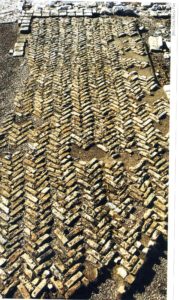
The events that led to the discovery and enhancement of the villa of Falerna are briefly summarized. The indication of the site was the work of Pietro Spinelli, a doctor and passionate scholar of the area, who described the area thus: «The plain of Piano delle Vigne is crossed by a wide, straight and uniform country road, called the road of Tirene, which, near the Cartolano torrent, is flanked by a large space of land, considered in popular tradition as a supply and rest station for an ancient road, perhaps the Popilia, which ran through the Bruttia region».
Some local young people, following the indications, unearthed some materials which they handed over to the municipal authorities, and from this discovery a first excavation campaign was launched, carried out in the form of volunteer work by some students of a Nicastro high school.
At the end of the fruitful excavation campaign carried out in 1974 Giuseppe Foti – then Superintendent of Antiquities of Calabria – wrote as follows: «The remains of a farm villa have been brought to light, which presents renovations and modifications of the building which took place in three successive phases, which can be traced back to the Roman imperial period, from the 1st to the 3rd century AD, judging by the objects found and the construction techniques of the walls».
The events that led to the discovery and enhancement of the villa of Falerna are briefly summarized. The indication of the site was the work of Pietro Spinelli, a doctor and passionate scholar of the area, who described the area thus: «The plain of Piano delle Vigne is crossed by a wide, straight and uniform country road, called the road of Tirene, which, near the Cartolano torrent, is flanked by a large space of land, considered in popular tradition as a supply and rest station for an ancient road, perhaps the Popilia, which ran through the Bruttia region».
The important scientific results achieved – the first ever obtained from a regular excavation campaign in the Tyrrhenian strip north of the Gulf of S Eufemia – prompted the authorities to organize two more campaigns, in 1976 and 1980, and only then were the excavated structures identified with the “pars rustica” of a villa.
In 1980 the Ministry of Cultural Heritage took note of the presence of traces of two rooms paved in “opus spicatum” which must have belonged to the monumental part of the villa and which could be attributed to the service sector, and the area was subjected to restrictions.
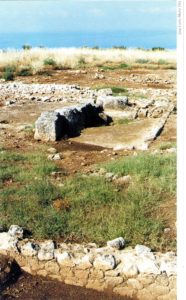
And in 1994 the Municipality of Falerna, with the collaboration of the Superintendency and the Ministry for Cultural and Environmental Heritage, created a FERS project which envisaged the expropriation of the area, the restoration of the structures and the creation of a municipal archaeological park .
Today the large terrace on which the Roman villa of Pian delle Vigne stands is protected and fenced, and in its immediate vicinity – on the road that connects the Marina with the hillside center – a building has been built that houses the permanent exhibition of the history of the complex, where life lasted for at least four centuries, from the beginning of the 1st to the 4th century after Christ.
The texts of the exhibition state that the Roman villa, whose main phase dates back to the first half of the 1st century BC, well exemplifies the type of the ideal villa by responding to the canons reported by the Latin writers who dealt with agriculture.
In fact, halfway up the coast, in a healthy and well-ventilated place, exposed to the south, it is not far from the sea and is near a flow road, which from the north led to the south, across the plain of Lamezia (Via Popilia, or a diverticulum of the same). The villa and its appurtenances, the text adds, are part of a trafficking area.
Today this villa, and its entire park, are not well known by the population, just as they are not known – and therefore not valued and protected – many other testimonies of the past that make the archaeological and historical heritage of Falerna and its territory rich .
The visit of the Roman villa of Pian delle Vigne, open every day during the summer, can thus be an opportunity to start a historical, archaeological and naturalistic itinerary that touches one of the oldest areas of Calabria, where it is possible to find finds that testify to the presence of human settlements dating back to prehistoric times.
An area surrounded by several orders of terraces born from the raising of ancient marine beaches, which embraces the sites of remote and mysterious cities such as Temesa and Terina and which is still today characterized by the presence of tombs, necropolises, remains of walls and aqueducts, discoveries of coins and sepulchral furnishings, remains of medieval fortifications, ruins and remains of civil and religious buildings dating back to the Byzantine and Norman ages, frescoes, capitals, icons, arches with Arab-Moorish influences, marble statues, wooden groups, Romanesque sculptures.
An itinerary that rises from the sea to over a thousand meters above sea level to offer the visitor an area of great naturalistic value that surrounds the slopes of Mount Mancuso and which is lost in buttresses dense with vegetation.
A better protection of these assets and a more capillary work of information could be factors of progress for a territory equipped with all the characteristics for a safe tourist development.
(from the magazine «Obiettivo Calabria» – periodical for the Calabrian Cameral System, n. 2 Year 1999. Photo by Carlo Maria Elia)